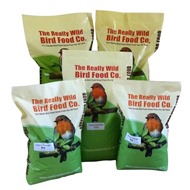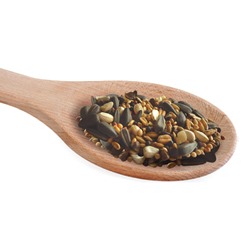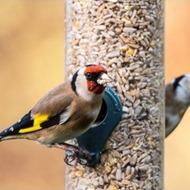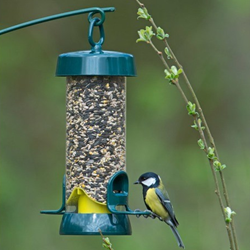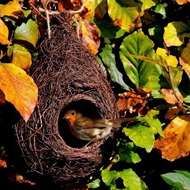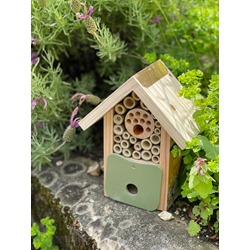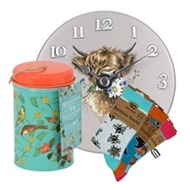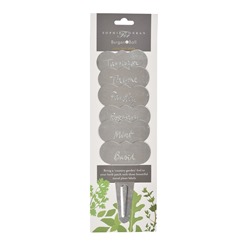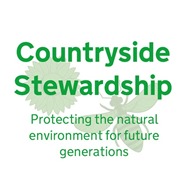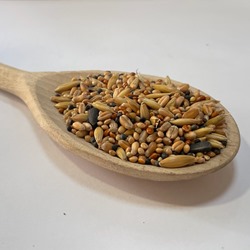
Are you looking to attract more wildlife to your garden? From birds to bugs, seeing wildlife in your garden is always a treat! Here at Really Wild Bird Food, we have a wide range of wildlife products that would make the perfect addition to a budding wildlife-friendly garden. Keep reading for our best tips on how to turn your garden into a bustling wildlife haven!
Let Your Grass Grow!
One of the best starting points for creating a wildlife-friendly garden is to let a section of your grass grow longer to recreate a wild environment. Long grass is one of the best habitats for bugs and plants, so by growing it out, you're sure to attract more wildlife and help to diversify your local ecosystem! You can even plant some wildflowers and create a wild area in the corner of your garden that bugs will love.
At Really Wild Bird Food, we offer a wide range of wildflower seeds that are sure to transform your garden into a haven for the pollinating species!
Provide Food & Water
Did you know birds are great for your garden's ecosystem? You can help them out by providing some supplementary food, especially now the cold weather is coming! In the colder months, look out specifically for high-protein feeds that give the birds the energy they need to survive the harsh winter. You can also provide special snacks that will attract other animals in your area, such as mealworms for badgers, fruit for foxes or wet cat food for hedgehogs.
Providing water for your local wildlife is equally as important as providing food. Try sinking a washing up bowl into the ground or turning over a dustbin lid and filling it with water. However, make sure you provide a ramp or rocky verge that animals can use to retreat from the water if they get stuck. A pond is also best filled with unchlorinated rainwater from a water butt and planted with some native species.
Get an Insect Hotel
If you want a thriving garden, a healthy bug population is a real must. We stock a selection of insect homes and feeders to get your garden buzzing with life in no time! These homes provide an over-wintering habitat for insects like Ladybirds (natural aphid predators) and a home for Solitary Bees (non-aggressive garden pollinators) and other beneficial insects during the summer.
With various designs available, we provide a great choice of insect habitats in all shapes and sizes. Adding an insect or bee home to your garden will not only look nice, but it will also serve an invaluable purpose for your friendly critters.
Besides our insect homes, we also supply an assortment of additional accessories and feeders, which help to keep your garden insects healthy throughout the duration of their life.
Among our most popular products are our bee homes, which are suitable for a range of bee species and populations of all sizes, from entire colonies to solitary bees, which often nest in large populations despite their name. This is a great way to help support your local bee population, while also benefitting your plants and flowers to help them thrive!
Provide Shelter
You can easily buy ready-made animal shelters like bird boxes, bug hotels and hedgehog houses or have a go at making your own from materials found in your garden like bricks, sticks and stones.
Here are some tips for how to position a next box for birds...
How to Position a Nest Box
When choosing where to locate your nest box there are certain things you need to consider:
- Choose a quiet location away from paths or busy areas.
- Avoid areas where predators can hide, i.e., cats.
- Position the nest away from your feeding area.
- Don’t fill the nest box with nesting material. It's better to offer wood shavings, sheep wool, dog or horse hair in an old wire feeder for the birds to help themselves and make their nest.
- The nest box should face between North and East to avoid extremes of weather, sun, rain and wind. Tilt the box forward a bit to reduce heavy rain hitting the entrance hole. Never place a nest box facing south.
- There needs to be a clear route for the birds to and from the next box.
- Space out nest boxes in the garden, most species prefer to be separate from other nests with the exception of house sparrow and starlings as they usually prefer to nest in groups.
Leave a Gap in the Fence...
Don't forget about the hedgehogs and frogs that may want to use your garden as their home - leave a little gap for them to come through!
By following these tips on how to make a wildlife-friendly garden, you should have a busy and bustling garden ecosystem in no time!
 Back
Back Bird Foods
Bird Foods
 Seed Mixes
Seed Mixes Straight Seeds
Straight Seeds Mealworms & Worms
Mealworms & Worms Chicken Feed
Chicken Feed Duck Food
Duck Food Peanuts & Peanut Butter
Peanuts & Peanut Butter Suet & Fat Balls
Suet & Fat Balls No Mess Bird Seed
No Mess Bird Seed Wheat Free Bird Seed
Wheat Free Bird Seed Sunflower Seeds
Sunflower Seeds Softbill Bird Food
Softbill Bird Food Bulk Bird Seed
Bulk Bird Seed Trial Packs
Trial Packs Pick & Mix
Pick & Mix Mini Pick & Mix
Mini Pick & Mix Birdie Basics: Budget Bird Food
Birdie Basics: Budget Bird Food Food for Small Birds
Food for Small Birds Back
Back Bird Feeders
Bird Feeders
 Seed Feeders
Seed Feeders Peanut Feeders
Peanut Feeders Peanut Butter Feeders
Peanut Butter Feeders Suet & Fat Feeders
Suet & Fat Feeders Window Feeders
Window Feeders Hanging Feeders
Hanging Feeders Feeding Stations
Feeding Stations Ground Feeders
Ground Feeders Easy Clean Feeders
Easy Clean Feeders Bird Tables
Bird Tables Seed Trays
Seed Trays Bird Baths & Drinkers
Bird Baths & Drinkers Feeder Accessories
Feeder Accessories Feeder Hygiene
Feeder Hygiene Squirrel Proof Bird Feeders
Squirrel Proof Bird Feeders For the Kids
For the Kids Niger Seed Feeders
Niger Seed Feeders Mealworm Feeders
Mealworm Feeders Bird Food Storage
Bird Food Storage Fat Ball Feeders
Fat Ball Feeders Tube Feeders
Tube Feeders



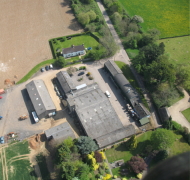 Our Farm
Our Farm
 Tips & Advice
Tips & Advice
Contact Us

